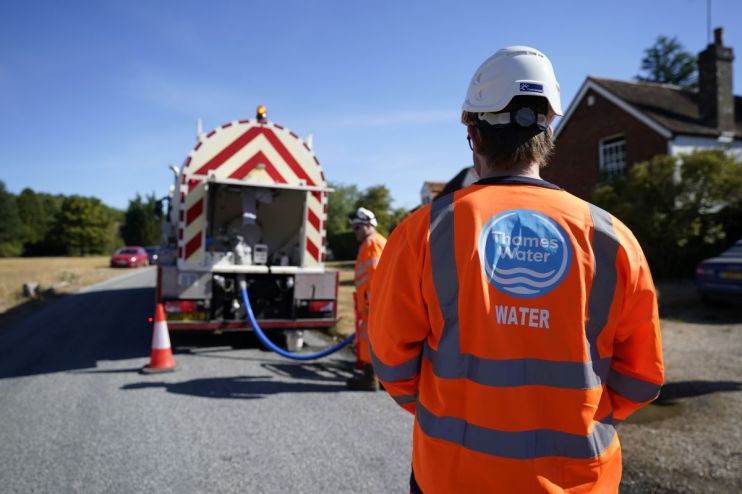Thames Water hangs on, but its future, and the health of our waterways, remains unclear

Thames Water’s reprieve this morning may have refreshed the company’s coffers, but the firm remains parched of funding for its future ambitions, which are essential to turning around the scandal-ridden supplier and providing a service its 15m customers deserve.
After the news this morning, the UK’s largest water supplier said it considers itself liquid with £4.4bn in the bank, but there’s still a drought of funding that is needed to fix frequent sewage spills, replenish creaking infrastructure, and rectify poor customer service.
Overall, the company remains £250m short of its £1.5bn target to fund its operating costs and investment plans for the next two years, while the latest tepid flow of cash comes with strings attached.
Funding over the next two years will require the supplier to return to shareholders with a business plan “that underpins a more focused turnaround” with targeted performance improvements.
In other words, it’s back to the drawing board with its plans to turnaround the company.
Money is also dependent on “appropriate regulatory arrangements” within the industry, which is probably in reference to a potential 25-40 per cent hike in water bills, as the industry looks to pass the buck for its failings onto customers.
Thames Water also confirmed it is well short of the £2.5bn windfall it needs for the 2025-2030 operating window to be “financially resilient”, which is essential for the supplier to lower leverage and reduce leaks.
Interim co-chief executive, Cathryn Ross, insisted to the BBC this morning that the utility giant was “absolutely not” close to being placed into special administration by the government, the fate which met for collapsed energy supplier Bulb nearly two years ago.
She believes the company has “enough to pay everything we think we need to pay this year, next year and into the future.”
However, as it struggles beneath a £14bn debt mountain, unions are increasingly unconvinced, with GMB noting the latest shortfall leaves “a massive hole” in Thames Water’s finances.
It also blasted industry plans to make customers foot the bill for the £10bn of upgrades suppliers have proposed to fix storm overflows.
Shareholders are still tentatively in support of the supplier, but the latest shortfall in desired funds reflects the general hesitancy the private sector has in backing a market characterised by sustained underperformance.
Thames Water is top of the pops when it comes to debts – posting another £132.3m full year loss this morning and confirming a debt ratio of 77.4 per cent – but it’s not the only water supplier bathing in the red.
Others under pressure include United Utilities (£8.2bn), Severn Trent (£7.2bn), Anglian Water (£6.5bn) and Yorkshire Water (£5.7bn) – powered by inflation but initiated through dividend extraction and underinvestment, which has led to a £65bn debt crisis in the industry.
The firm’s financial difficulties come amid growing concern over the stability of the entire sector, with Southern Water, SES Water, Portsmouth Water and Yorkshire Water also in Ofwat’s crosshairs.
Contingency plans have been drawn up in case of Thames Water’s collapse, but there is confidence within the industry it will survive the latest scare, which was first initiated by the boardroom exodus of both chief executive Sarah Bentley and chair Ian Marchant.
But it is likely to remain on life support for years to come, propped up through erratic transfusions of investors cash.
This is a fate that’s bad for customers, business and the industry – making it essential to consider what reforms and regulations can be brought in to resolve this.
Later this week, MPs will have the chance to grill Thames Water, Ofwat and the government over the crisis the industry faces – and their questions could be the first stage for finding answers to build a water sector the UK can be proud of.